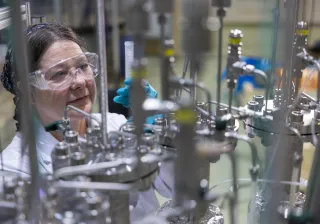We are heading towards a third AI winter. AI winter refers to a period of time during which companies, researchers, research funders and the general public are disappointed in artificial intelligence and the results achieved through it. This, in turn, leads to the freezing of funding and investments as well as to the stagnation of development. Researchers and experts move on to other technologies or start calling their activities by other names.
Disappointment is preceded by a hype period of high expectations. Great hopes are attached to artificial intelligence. Once success has been achieved in, for example, games or face recognition, success is expected in other areas as well.
The failure of promises related to artificial intelligence has previously led to two AI winters. The first AI winter took place at the turn of the 1970s and 1980s due to enthusiasm around artificial intelligence fizzling out with nothing to show for it. The next cold season began in the early 1990s when the great hopes placed in expert systems and artificial intelligence implemented using the then-popular LISP language fell apart. The cold season was so long that it could be called a mini ice age instead of winter. Artificial intelligence only entered the horizon of the general public and investors a few years ago.
Great hopes are attached to artificial intelligence
The rise of artificial intelligence has been fast and intense. The rise was initially driven by the IBM Watson artificial intelligence, which astounded the world by winning its human opponents in the Jeopardy game show in 2011. Watson, which is actually a marketing name for several computer programs, utilises extensive databases and Internet searches. Watson is based on question-answering technology and automatic analysis of text and data. So it does not primarily rely on deep neural networks, the results of which will soon replace Watson in the limelight. Deep-learning, or very large, neural networks can be taught to carry out quite reliable pattern recognition, or classification and prediction, through training data. The most impressive examples relate to identifying things in pictures.
Nowadays, hopes attached to artificial intelligence range from overcoming diseases to unprecedented business benefits. When neural networks and other artificial intelligence technologies are applied to tasks they are not suited for, there will inevitably be disappointments. Deep disappointments can lead to a third AI winter.
Methods that learn from data should be combined with traditional solutions
So what can we do to ensure that the benefits of technology are not missed due to the freezing of research and development investments?
Firstly, we must recognise the limitations of existing artificial intelligence technologies and, secondly, we must combine their strengths with more traditional engineering solutions. So at least hybrid solutions are needed with neural networks and other algorithms complementing physical models. One example to consider is the process of a pulp mill that is traditionally guided based on control and systems engineering as well as the experience of operators. When this is combined with methods that learn from data, such as neural networks, it is possible to a achieve an improvement of several percentage points in yield. At a large pulp mill, an improvement of a few percentage points can mean millions of euros.
Artificial intelligence to bring autonomous cars and customised care
In the next few years, the impact of artificial intelligence technologies will be lesser than is now believed in the wildest of hopes. But in the longer term, the impact will be great, even revolutionary. For example, autonomous cars, treatment customised in accordance with the patient’s genetic heritage or automation of routine tasks will change the world over the next decades in the same way that urbanisation or the industrialisation of agricultural society changed it in the 20th century.





